We all have a unique relationship with the sun. Some of us love it and bask in it, while others choose to steer clear of the sunshine and scorching summer temperatures whenever possible. Whether you love it or hate it, we all experience both the good and bad sides of sun exposure.
Let’s talk about the good first. Getting a good amount of sun not only keeps the skin healthy but also keeps our Vitamin D levels in check. Vitamin D is essential for bone health and mental wellness. Vitamin D deficiency (which over 40% of Americans suffer from) can often lead to conditions like weak muscles, cancer, osteoporosis, and depression.
However, too much of anything is never good — and sun exposure is no exception. Here, we break down the basics of sun damage: how it harms the skin, why it’s worth worrying about, and what you can do about it.
How Does Sun Damage Harm the Skin?
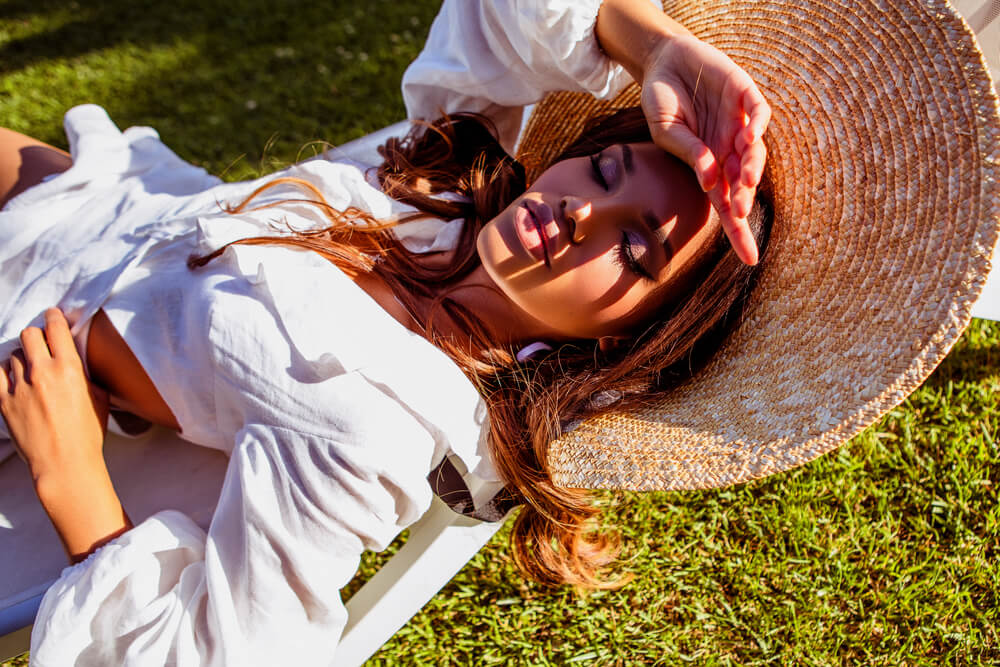
Sun exposure can manifest negatively in two ways: short-term and long-term:
Some of the more immediate effects include redness or sunburn. While pesky and irritating, these consequences naturally go away with time. Using creams and ointments can also speed up the recovery process.
But what about long-term damage?
The worst effects of sun exposure aren’t immediately visible. Collectively referred to as photoaging, long-term sun damage happens when ultraviolet rays come in contact with unprotected skin. There are two kinds of ultraviolet light that we should be aware of, UVA and UVB:
- UVA light makes up close to 95% of the UV radiation that we are exposed to. While slightly less intense than UVB, UVA rays can penetrate the skin on a deeper level. UVA is also the primary culprit behind the visible signs of aging.
- UVB light is associated with shorter wavelengths and is the force behind sunburns.
UV radiation causes the DNA in the skin’s deepest layers to change, meaning it could take several years for these effects to show through on the skin’s surface. Some of the common signs of photoaging include:
- Hyperpigmentation in the form of sun spots, age spots, and freckles
- Wrinkles and fine lines
- Uneven skin texture
- Sagging, due to fast-tracked depletion of elastin
There is also the ever-looming risk of skin cancer. Skin cancer is the most common kind of cancer in the United States. Everyone is at risk, especially when frequently exposed to UV radiation without ample protection. However, the risk of skin cancer may be greater for those with a pale complexion and sensitive skin, light eyes, and red or blond hair.
Is it Possible to Reverse the Appearance of Sun Damage?
UV exposure is cumulative, meaning that the damage dealt to the skin adds up over time. However, there are a few ways to reduce the visible effects of photoaging, even before they begin to show through on the skin’s surface. These include treatments, lasers, peels, cryotherapy, and of course, an effective skincare routine.
Skincare Ingredients to Reduce the Appearance of Sun Damage
That said, some ingredients can hit reverse on the appearance of sun damage. Some are long-standing holy grails, while others are lesser-known but equally as promising. We break them down below:
Vitamin C
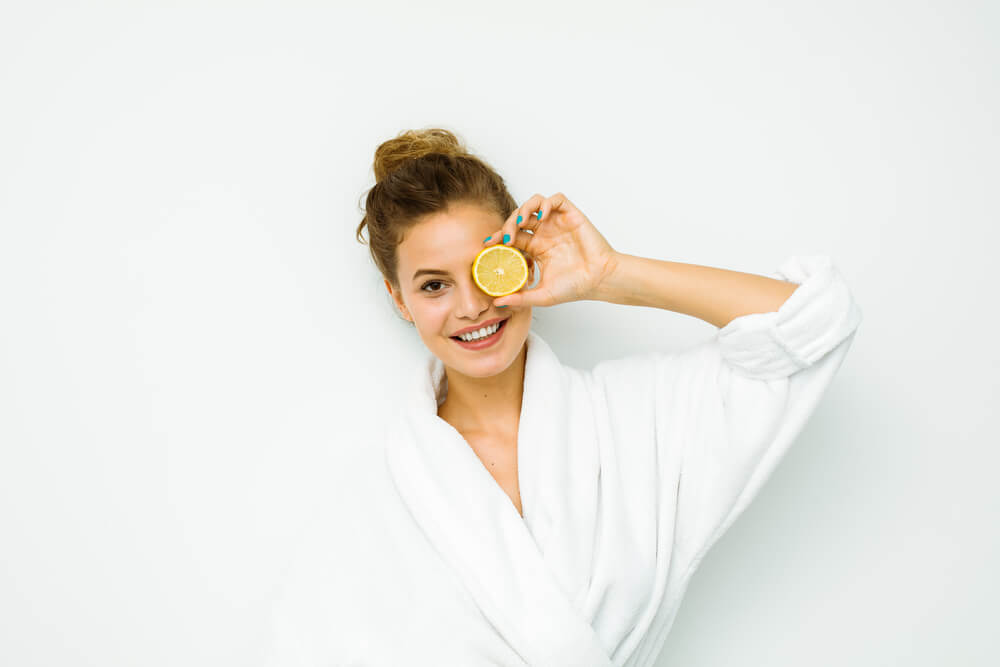
An oldie but goodie, Vitamin C has left an indelible mark in the worlds of beauty and wellness. Not only does it make us look and feel better — Vitamin C is essential for good health.
When infused into skincare, there’s no question that Vitamin C brings a wealth of benefits. This is why vitamin C serums have become so popular, with our version being the Nourishing Vitamin C Serum – we’ll discuss this potent formula in more detail later on!
The benefits of vitamin C include brightening the look of the skin, evening out the appearance of the skin tone, and fighting off the visibility of fine lines.
Another point to consider: Vitamin C is well-loved for its ability to reduce the appearance of pigmentation. This includes dark marks, and sun spots, which are often aggravated by UV exposure.
Vitamin A
Have you heard of Vitamin A in skincare? Chances are you’ve heard it go by another term: Retinol.
Retinol is just one of the various forms of Vitamin A that can help minimize the appearance of sun damage. Other forms include Retinyl Palmitate, Retinaldehyde, and Tretinoin. The power of these ingredients lies in their ability to bring sun-damaged skin back to its original appearance to reveal skin that looks new and bright.
However, Vitamin A — particularly Retinol, Retinaldehyde, and prescription-only forms like Tretinoin — must be used with caution. As beneficial as they can be for the skin, these forms of Vitamin A are incredibly potent. This may cause them to be drying or sensitizing for some skin types. It’s also important to note that sun exposure may amplify the side-effects of Retinol, so this ingredient must be used alongside sunscreen.
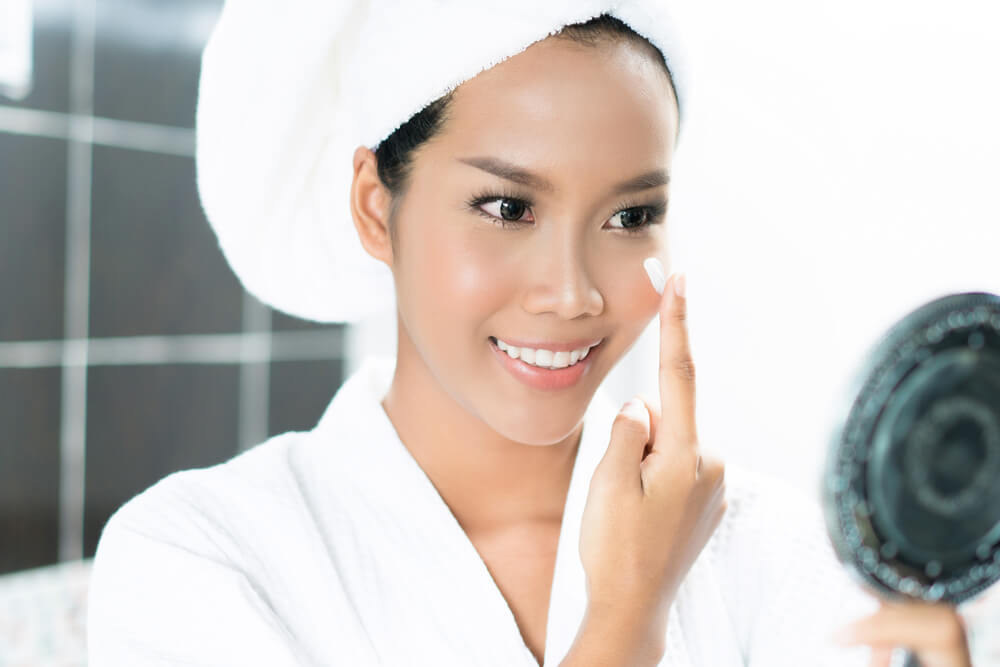
Niacinamide
In the past few years, Niacinamide has skyrocketed to the top of beauty must-have lists all over the world. However, the hype is anything but groundless. Niacinamide is the ultimate skincare multitasker, with the ability to:
- Minimize the appearance of pores by keeping the skin moisturized
- Minimize the look of redness and inflammation
- Reduce the visibility of fine lines and wrinkles
Alpha Hydroxy Acids (AHAs)
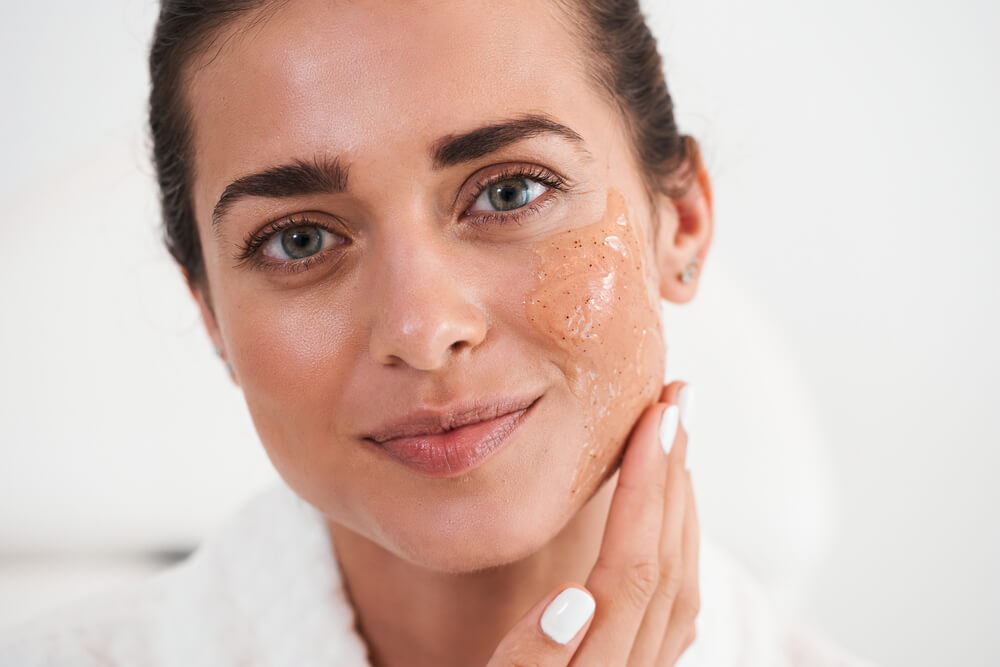
Alpha Hydroxy Acids like Lactic Acid, Glycolic Acid, and Mandelic Acid may help undo sun damage, but they are also extremely tricky. Like Vitamin A, AHAs can sensitize the skin, making it more vulnerable to the effects of sun damage. However, these acids can also aid in reducing UV-induced hyperpigmentation and uneven texture.
So how do you balance these factors out? Here are a few tips to remember:
- Introduce AHAs into your routine gradually. Start with weekly usage, then work your way up to every few days to build up your skin’s tolerance.
- Choose your AHA wisely. Mandelic Acid is the safest and most gentle AHA, while Glycolic Acid is the most powerful. If you’re new to acids, start low and slow.
- Use your AHAs in the evening. Because these acids cause sensitivity to the sun, it’s best to pencil them into your evening routine.
- Apply sunscreen religiously, even on days when you haven’t used AHAs in your regimen.
Red Coral Seaweed
Last but not least is Lavelier’s magic ingredient, Red Coral Seaweed. It’s packed with beneficial properties that leave the skin feeling deeply hydrated.
It’s also a great ingredient for reducing the appearance of fine lines and wrinkles caused by the sun.
5 Skincare Products to Minimize the Appearance of Sun Damage
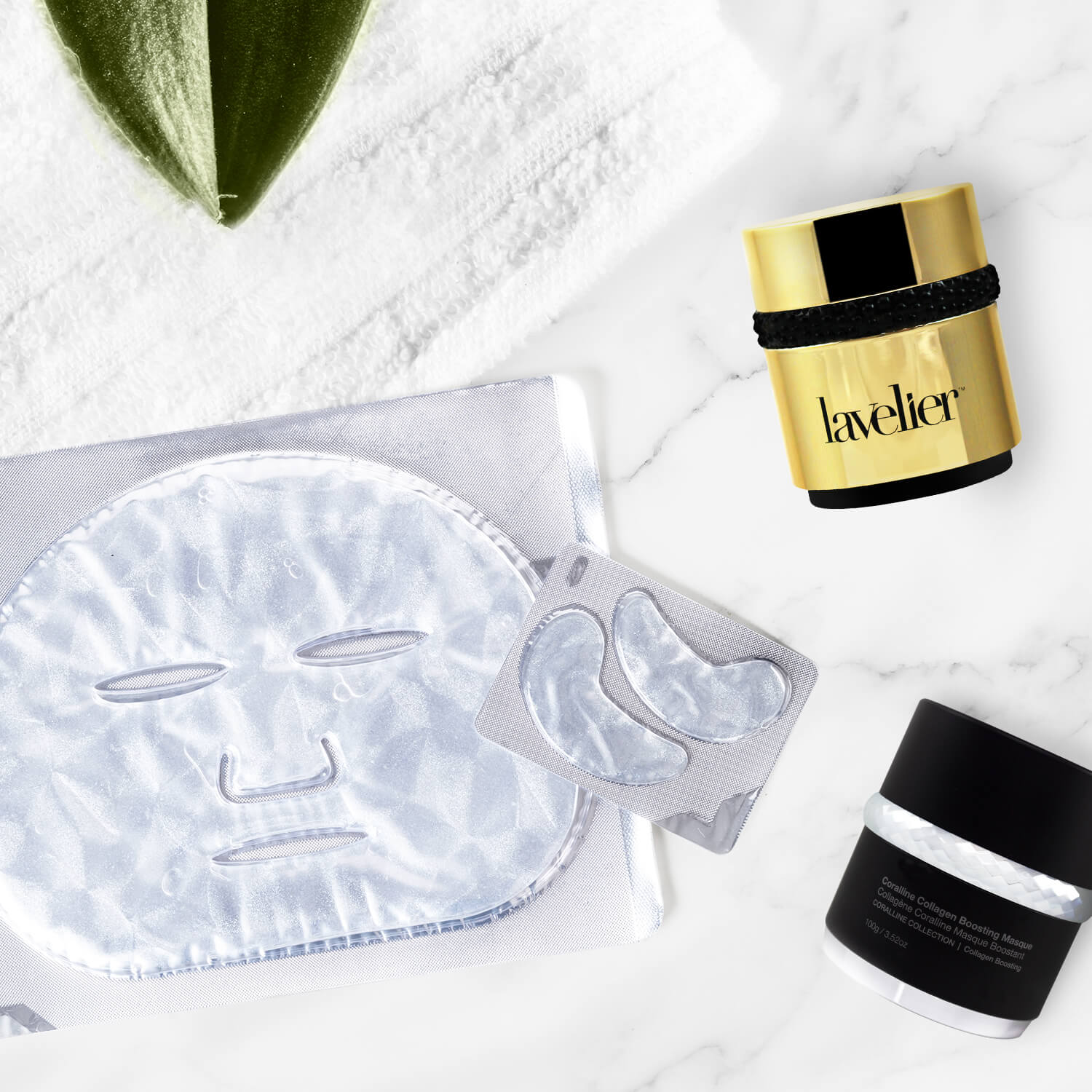
Here at Lavelier, we are all about delivering good skincare and even better results. Through our innovative beauty products, we hope to give you the confidence to go outside and enjoy the sunshine, knowing that your skin feels safe and protected against the threat of sun damage.
Here are a few skincare products to help you reduce the visible effects of sun damage on your skin:
Coral Luminous Masque
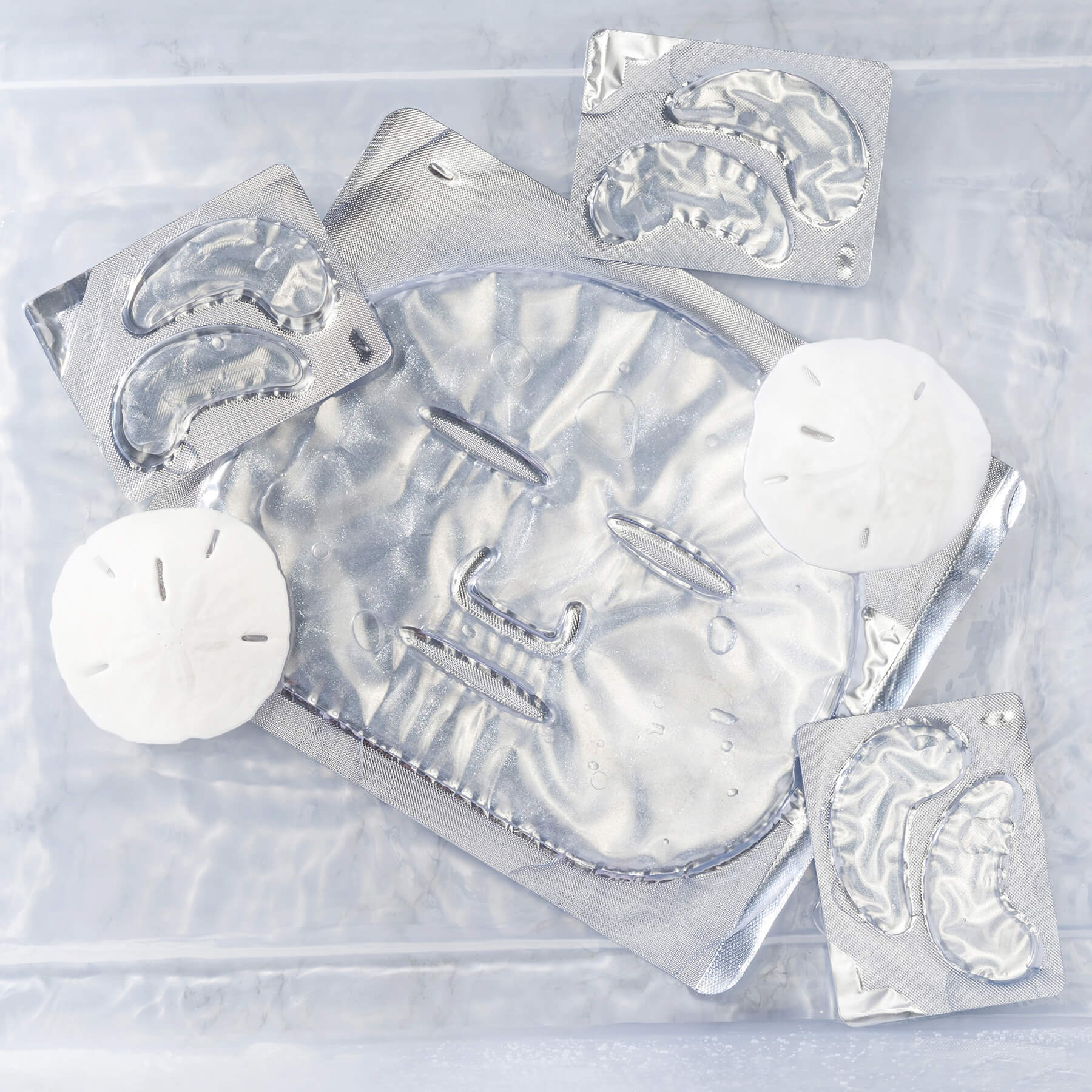
A quick fix for skin that looks dull and dry, the Coral Luminous Masque brings back luster and moisture almost instantly. Unlike typical cotton sheet masks, these face and eye masks are made out of absorbent cellulose, which helps lock in the serum’s nourishing ingredients.
Standouts in the Coral Luminous Masque’s formulation include:
- Chitosan, a polysaccharide derived from the outer shells of lobsters, crabs, and shrimp.
- Algae Extract, which is known to fight off the appearance of pigmentation
- Hyaluronic Acid, another humectant that keeps the skin feeling well-hydrated and plump.
- Hydrolyzed Red Coral Seaweed, Lavelier’s signature ingredient, which reduces the look of dullness and brightens the appearance of sun-damaged skin.
To use, simply apply either the eye or face mask onto the face, smoothening them out with your fingertips until they lay flat against the skin. Let the mask rest for fifteen minutes before slowly lifting it off the skin. Massage any remaining serum into the skin until fully absorbed.
Skin Clair Repair
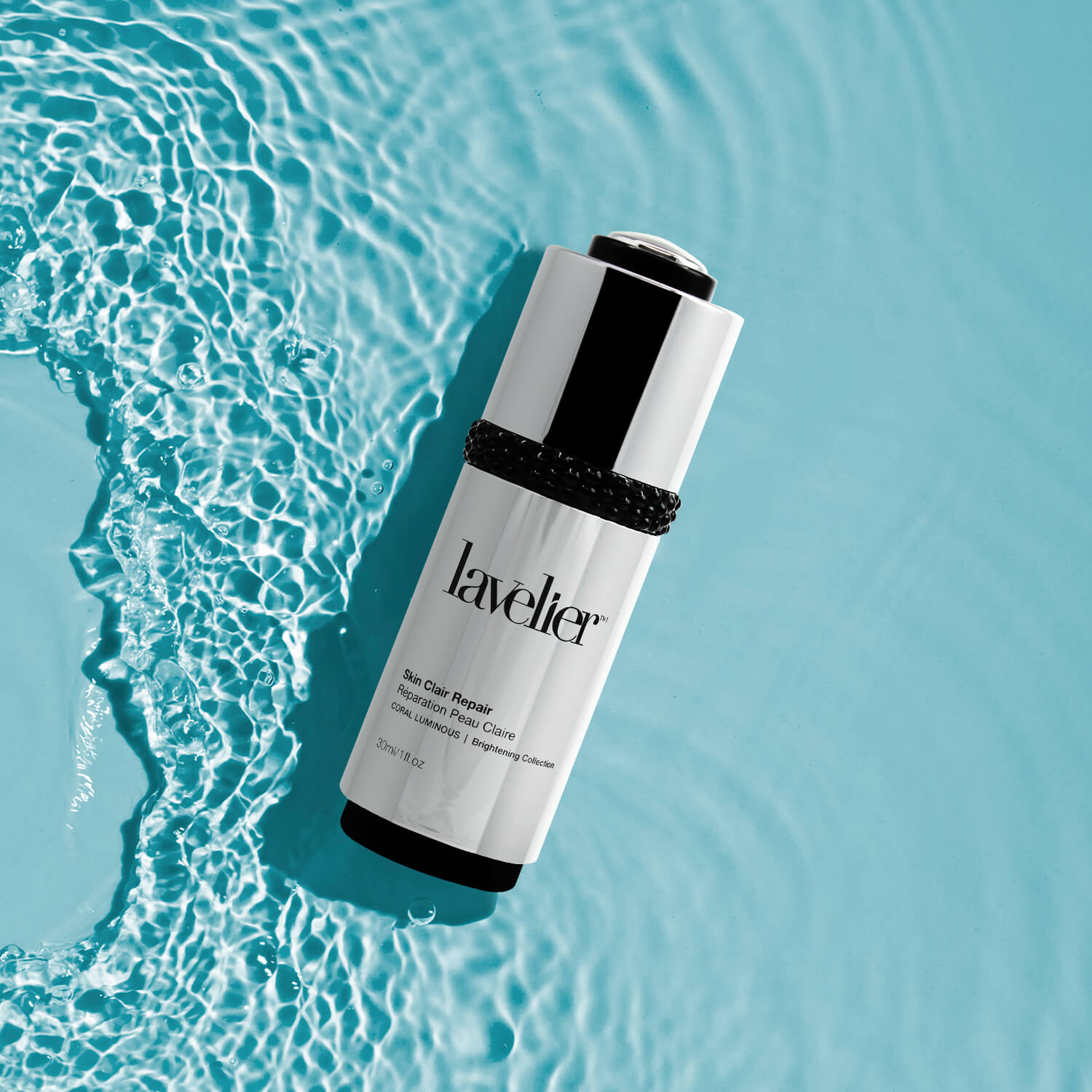
A frontrunner in Lavelier’s sun damage roster, the Skin Clair Repair serum is the answer to visible UV-induced dark spots and discoloration. This lightweight solution combines Kojic Acid and Lactic Acid to combat the biggest visible effects of sun damage.
Nourishing Vitamin C Serum
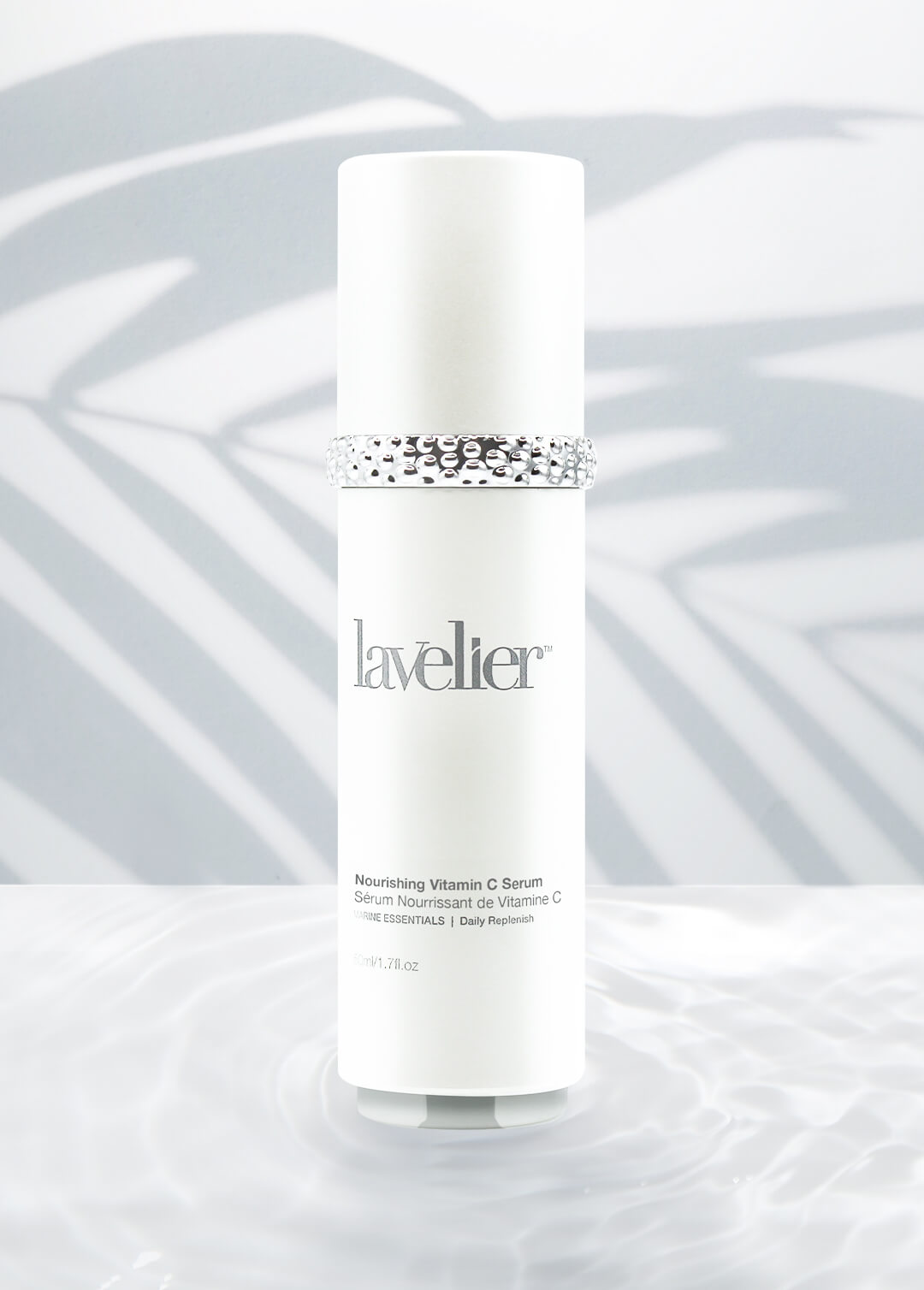
Harness the effects of Vitamin C with Lavelier’s Nourishing Vitamin C Serum. Specially formulated to target the appearance of age spots, and sunspots, this specialized serum helps the skin look and feel its best.
In addition to antioxidant-rich Vitamin C, this product is also formulated with Retinyl Palmitate, a form of Vitamin A. Unlike Retinol, Retinyl Palmitate is gentle and non-sensitizing while providing many of the same benefits.
HydroTherm Age Defying Syringe
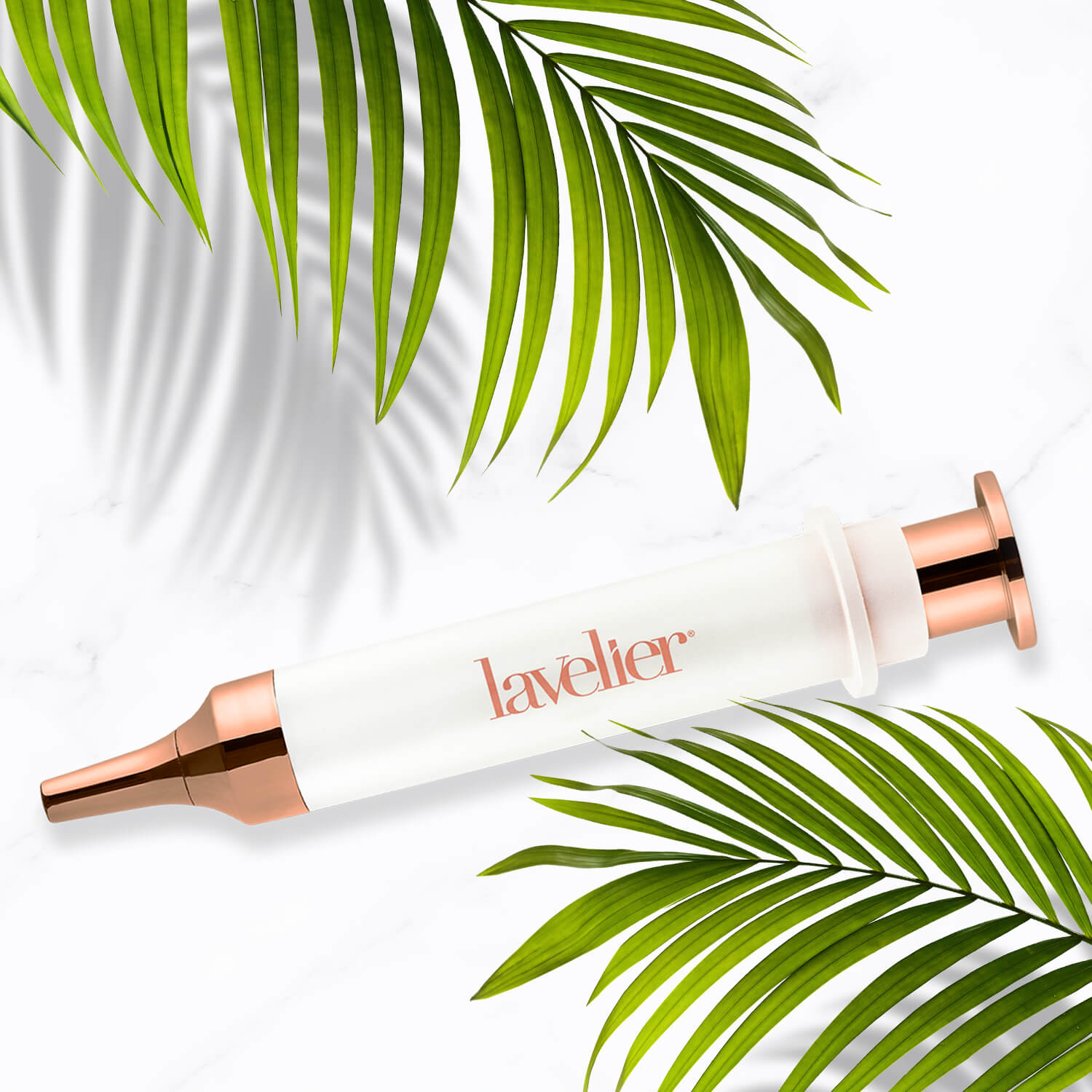
Sun damage does not manifest in all areas of the face at the same time. Depending on how you slather on your sunscreen, how well you cover up your face, and what time of day you head outside, certain areas of your face are bound to suffer more damage than the others. This is where the Lavalier HydroTherm Age Defying Syringe comes in.
Now, don’t let the word “syringe” scare you away — this product is completely non-invasive. Equipped with a unique injection-like applicator, this supercharged serum helps you pinpoint specific problem areas that may have more visible lines, wrinkles, or discoloration.
But the question remains: what lies within this mysterious skincare syringe? The answer is a special cocktail that leaves skin looking revived:
- Dimethylaminoethanol or DMAE. An ingredient found in fatty fish, DMAE aids with slowing down the appearance of wrinkles, reducing the look of inflammation, and improving skin hydration.
- Acetyl Hexapeptide-8. Just like DMAE, this ingredient reduces the visibility of lines on the skin
- Sodium Hyaluronate. Like its cousin Hyaluronic Acid, Sodium Hyaluronate binds water to the skin to ensure it stays well-hydrated — only it penetrates deeper into the skin thanks to its lower molecular weight.
Divine Day Defense SPF 30
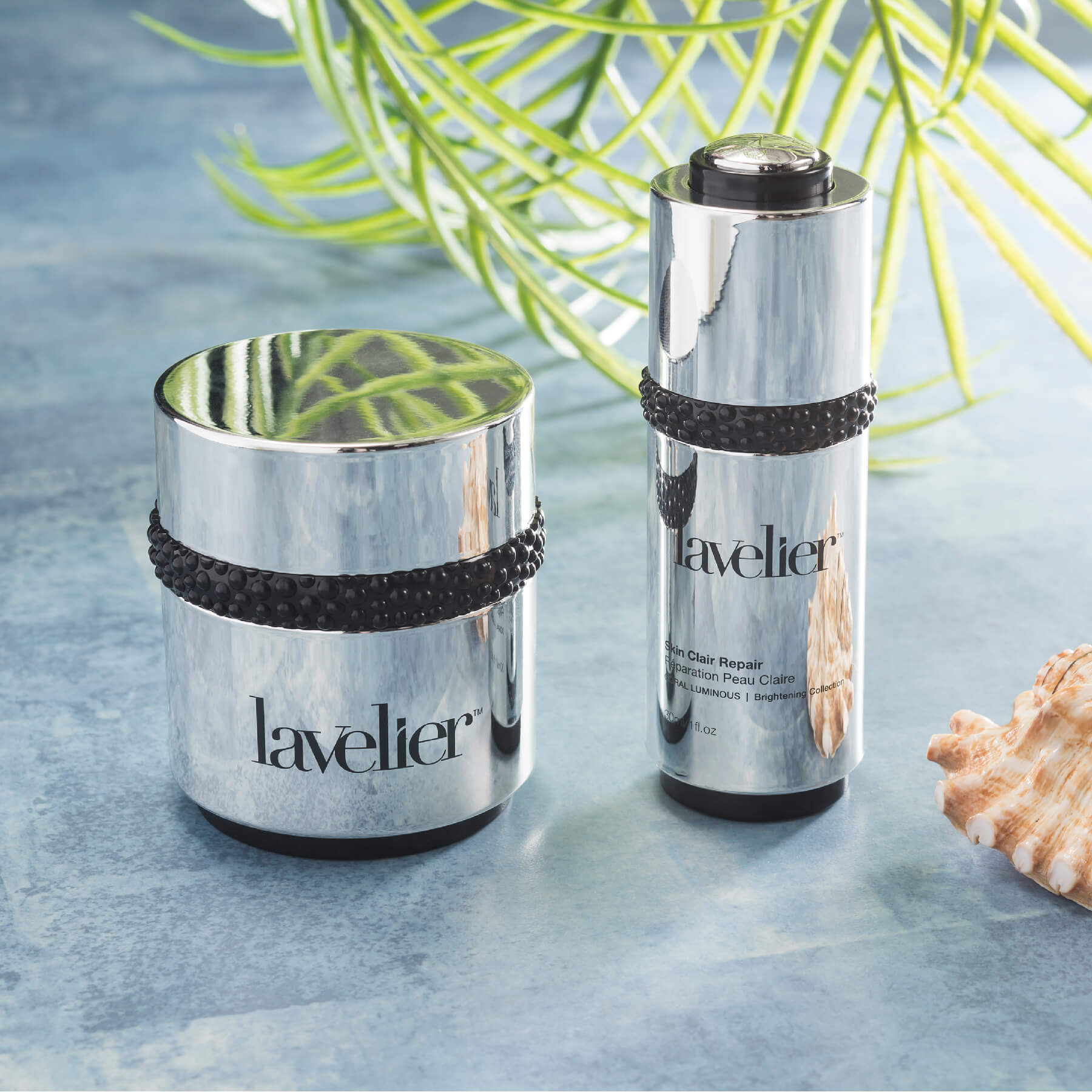
Throughout this article, we’ve mentioned the importance of applying a layer of sun protection several times. We’ll continue to say it, too, because it’s just that important: none of the ingredients above can do their work unless you make a habit of applying sunscreen daily.
While it might sound tedious, including sun protection in your current regimen shouldn’t be all that difficult. You can even combine SPF and your moisturizer into a single step, for that matter.
Case in point: Lavelier’s Divine Day Defense SPF 30. Richly moisturizing yet light enough for the daytime, this two-in-one product combines antioxidants, botanicals, and marine extracts in a single jar. In addition to keeping the skin looking plump and soft, it also keeps it feeling safe with a sun protection factor of 30 — just enough to keep you safe during outdoor activities!
Managing sun damage is a challenge: there’s no way to avoid it absolutely nor repair it completely. However, there are some ways to ensure your skin recovers from the visible damage that UV light inflicts.
Start reversing the appearance of sun damage today with Lavelier’s coral seaweed-powered skincare!


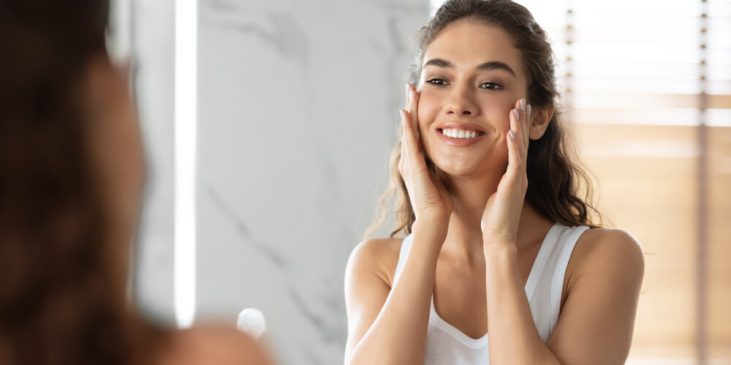
2 comments on “How to Reduce the Appearance of Sun Damage in Your Skin”